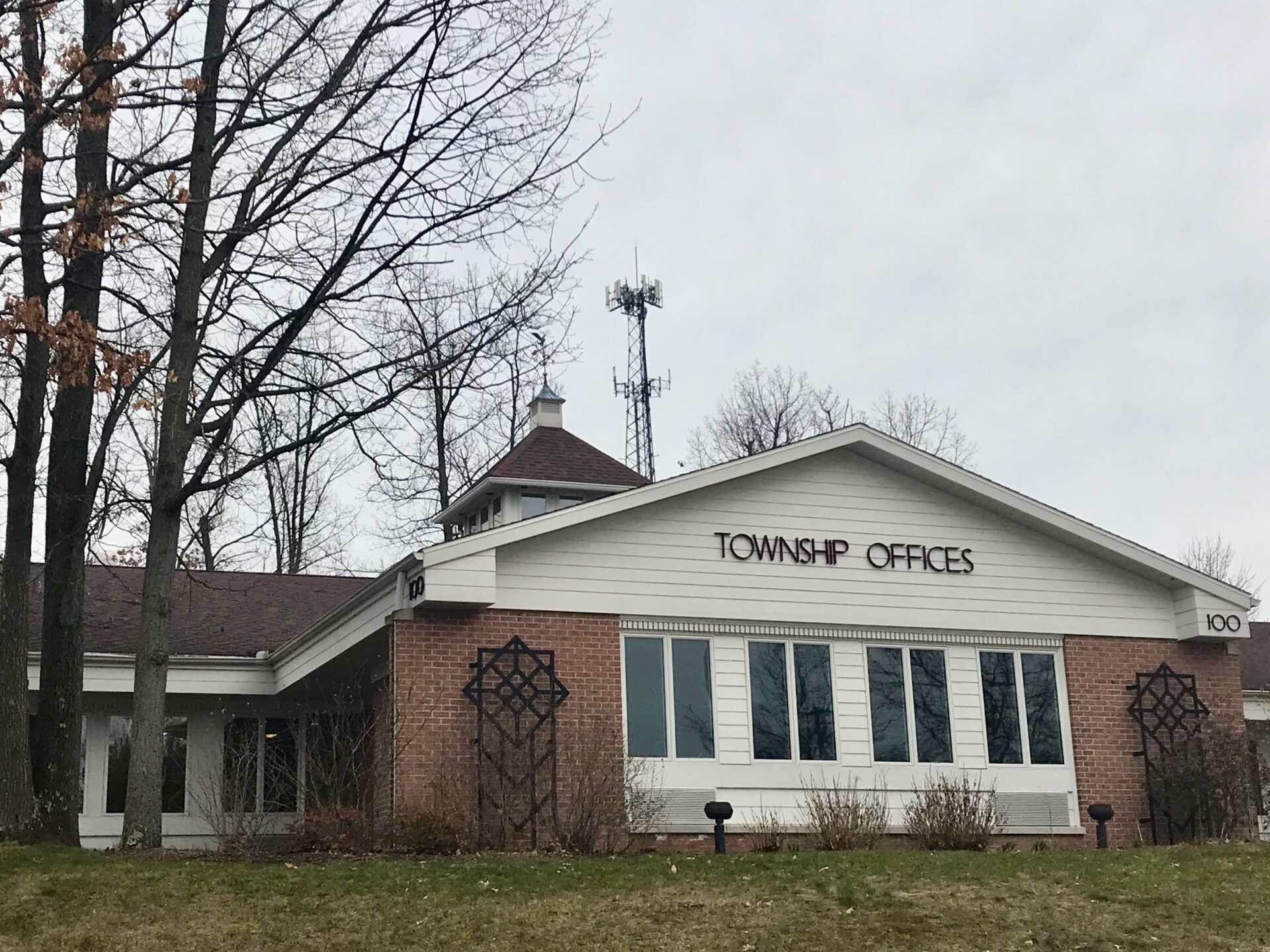Patton Township has become the second Centre Region municipality to commit to a goal of 100% renewable energy for municipal operations.
At a meeting on Jan. 26, the Board of Supervisors voted unanimously to adopt a resolution to transition to 100% clean, renewable energy by or before 2050. State College Borough Council made a similar commitment in 2019, joining 40 other communities in Pennsylvania and more than 180 nationwide to make the pledge.
Patton Township’s resolution also supports the sweeping Climate Action and Adaptation Plan (CAAP) adopted in November by the Centre Region Council of Governments, which counts among its goals a 45% reduction in greenhouse gas emissions by 2030 for the six member municipalities and an 80% reduction by 2050, with carbon offset projects addressing the remaining 20%.
“We have been working with our Centre Region municipal partners, technical advisors, engaged citizens, and the sustainability planner of the Centre Region Planning Agency to develop the Climate Action and Adaptation Plan,” Supervisor Betsy Whitman said in a statement after the meeting. “We believe this plan is thorough and detailed enough to make our Patton Township resolution actionable. We’re particularly proud of the emphasis we have placed on green jobs and economic development as well as providing tangible benefits to low-income residents and others who have historically been disadvantaged by fossil fuel-based energy systems.”
The CAAP and Patton Township’s resolution are the latest in ongoing efforts in the Centre Region and the county to reduce carbon emissions. Ferguson and Harris townships and State College have previously committed to net-zero greenhouse gas emissions for municipal operations by 2050. The University Area Joint Authority and the Centre County Correctional Facility in recent years have installed solar arrays to power their facilities, with UAJA also using its array to offer a solar co-op for residents.
A working group of the COG municipalities and affiliated entities has been working toward a potential joint solar power purchase agreement since 2019.
Pennsylvania’s temperatures increased 1.8 degrees in the last century and temperatures in the 21st century have been the highest on record, according to the National Oceanic and Atmospheric Administration. By 2050, the commonwealth is expected to warm by 5.9 degrees more.
The National Weather Service found that annual precipitation in Pennsylvania has increased about 10% in the past century, and during that time State College experienced a 70% increase in extreme rain events of 2 inches or more, according to the resolution. In 2018, the Pennsylvania Auditor General’s Office reported $261 million in climate-related costs for Pennsylvania, including $127 million in infrastructure damage from floods and landslides.
A 2016 greenhouse gas emissions inventory determined the Centre Region contributed more than 824,000 metric tons carbon dioxide equivalent and that 67% of emissions came from energy consumption, one of the largest costs incurred by municipalities, according to the resolution.
Renewable energy costs have decreased and are reaching price parity with non-renewable energy, according to the resolution, and the transition is expected to have positive economic implications.
“The transition to 100 percent clean, renewable energy will promote employment opportunities and sustainable growth in Patton Township, the Centre Region, Centre County and the Commonwealth of Pennsylvania, facilitate local control and ownership over energy options, and bring tangible benefits to low-income residents and others who have historically been disadvantaged by fossil fuel-based energy systems.”
Supervisor Dan Trevino said implementation will be the biggest challenge of the commitment, particularly for public works needs.
“In my kind of amateur estimation I think public works vehicles will be the biggest challenge if the industry doesn’t provide equipment that can run on non-fossil fuels, big trucks and excavators and all those sorts of things,” Trevino said. “I think achieving this goal really will depend on whether the industry can provide those kinds of vehicles.”
Whitman said larger electric vehicles are being developed and that commitments from municipalities will help to grow the market.
“I’m not going to be a crystal ball reader and say that we will be there but I think we do set the goal to try and that may bootstrap the industry to follow,” she said.
The Sierra Club Moshannon Group worked with Patton Township on developing the resolution. Ellen Foreman, a member of the group’s Ready for 100 team, which works to advance community initiatives for 100% clean, renewable energy, applauded the township for its commitment.
“It has truly been a privilege for our team to work with local leaders as Patton Township joins the growing list of other municipalities and counties in Pennsylvania and across the country committed to a sustainable future,” she said. “We are energized by this and the other resolutions in the Centre Region and will continue to work together to find and implement solutions that will enable the transition to clean energy creating a healthy, vibrant future for generations to come.”
In addition to setting a goal of 100% renewable energy for municipal operations and meeting the CAAP goals for greenhouse gas emission reductions, the resolution also states the township will strive to :
• Engage peer governmental entities, non-governmental organizations, businesses and universities to raise awareness of climate change, identify and encourage courses of action to reduce the amount of GHG emissions, identify and encourage courses of action to lessen the impacts of changing climate conditions and embrace the opportunities of climate adaptation;
• Continue to lead by example to rapidly pursue these goals in a manner that is transparent, fair, and economically responsible; and
• Encourage township residents, business, peer government entities, and non-governmental organizations to follow suit by enthusiastically promoting the township’s steps toward impactful reductions in GHG Emissions; and
• Encourage local projects and local impacts first, prior to making an investment out of the region to provide long-term benefits to the region; and
• Promote “clean, renewable energy” to achieve the stated goals which includes energy produced from environmentally beneficial technologies. Technologies will be evaluated for carbon impact, public health and environmental justice.



